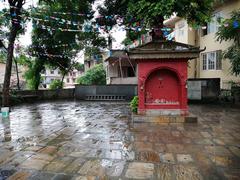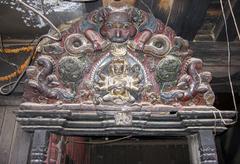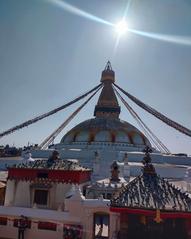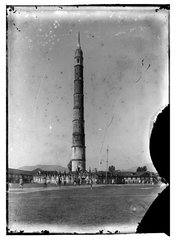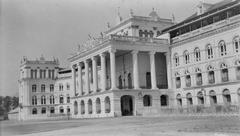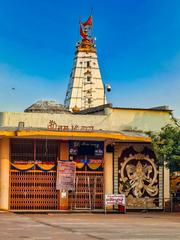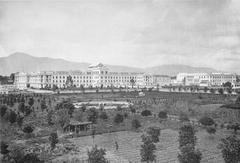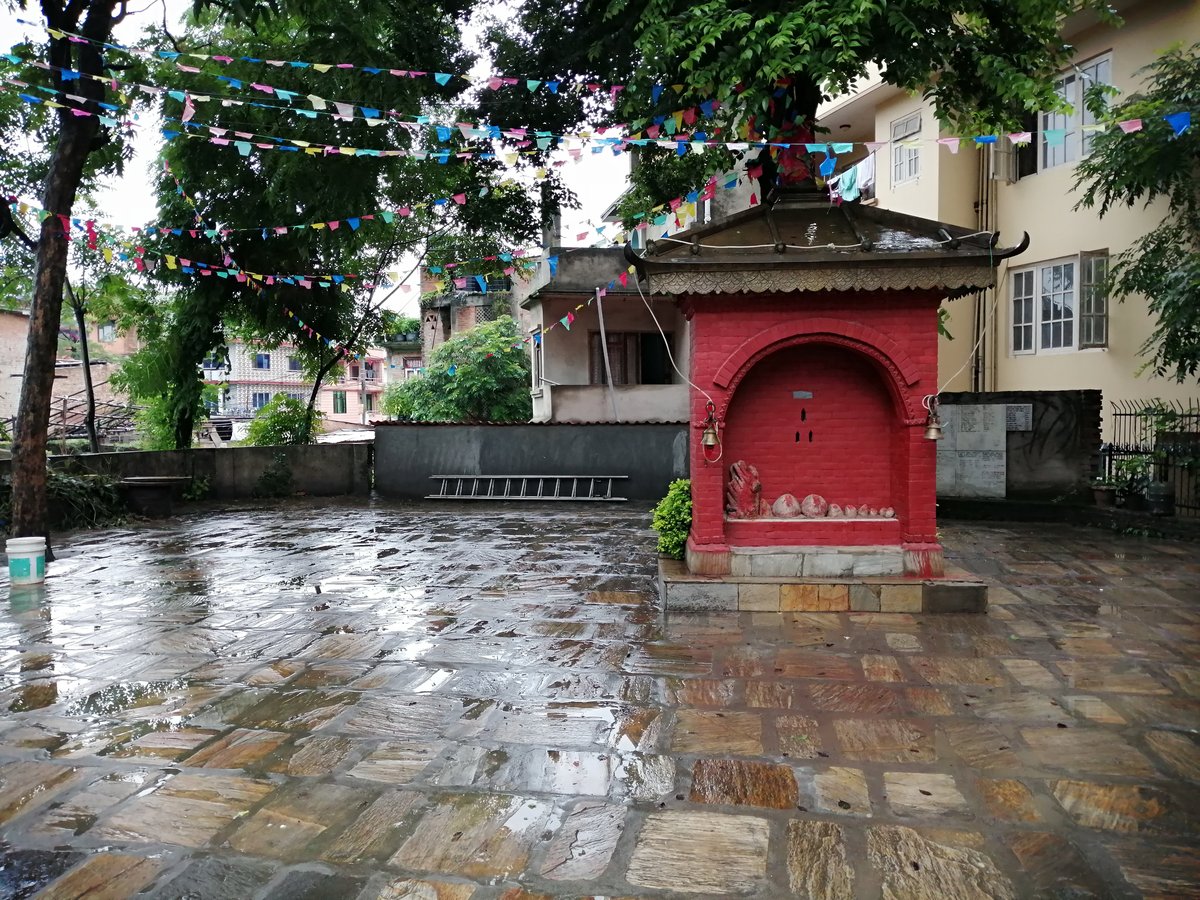
Kumari Temple Kathmandu: Visiting Hours, Tickets, Festivals & Historical Significance
Date: 14/06/2025
Introduction
The Kumari Temple, or Kumari Ghar, is an iconic cultural and religious landmark located at the heart of Kathmandu Durbar Square—a UNESCO World Heritage Site (mountain-hike.com). Revered as the residence of the Living Goddess Kumari, the temple embodies Nepal’s syncretic spiritual traditions, blending centuries-old Hindu and Buddhist beliefs. This comprehensive guide details the temple’s history, visiting hours, ticketing, festivals, etiquette, accessibility, and nearby attractions to help you plan a meaningful and respectful visit.
Table of Contents
- Introduction
- Historical Background and Evolution of the Kumari Tradition
- Visiting the Kumari Temple
- Festivals and Rituals
- Nearby Attractions in Kathmandu
- FAQs: Visiting the Kumari Temple
- Tips for a Respectful Visit
- Visual & Interactive Resources
- Conclusion and Recommendations
- References
Historical Background and Evolution of the Kumari Tradition
Origins and Mythological Roots
The Kumari tradition is a unique spiritual practice rooted in Nepalese culture and is centered around worshipping a prepubescent girl as the living embodiment of the goddess Taleju, a form of Durga (villanepal.com). Legend recounts that Taleju once appeared to the Malla king in human form, promising her continued protection of the city through a chosen Newar girl from the Shakya or Bajracharya caste (thearunjoshiverse.wordpress.com). This tradition, institutionalized during the 18th century under King Jayaprakash Malla, continues today, reflecting a deep interweaving of Hindu and Buddhist beliefs (ntb.gov.np).
Architecture and Institutionalization
Constructed in 1757 AD by King Jayaprakash Malla, the Kumari Ghar exemplifies traditional Newar architecture, with intricate wooden carvings, brick masonry, and a distinctive three-story structure. The temple’s facade features symmetrical red brickwork, dark timber windows, and latticed balconies, while two white stone lions guard the main entrance (thelongestwayhome.com; explorebuddham.com).
Syncretism of Hinduism and Buddhism
The Kumari is selected from Buddhist Shakya or Bajracharya families but is revered as a Hindu goddess, making her a potent symbol of religious harmony (himalayantrekking.com; nepaldatabase.com). Buddhist priests oversee her selection, while both Buddhist and Hindu rites are performed during major ceremonies (thewondernepal.com).
Kumari Role in Modern Nepal
Despite Nepal’s transition to a republic in 2008, the Kumari tradition remains central to national and civic life. The Living Goddess is sought by both officials and the public for blessings during festivals and state occasions. Modern reforms have improved her welfare, ensuring access to education and medical care (nepaltraveller.com).
Visiting the Kumari Temple
Location and Access
The Kumari Temple is situated in the southern sector of Kathmandu Durbar Square, a short walk from Thamel and easily accessible by foot, taxi, or rickshaw (explorebuddham.com). The square is a vibrant nexus of Kathmandu’s historical and social life, surrounded by palaces, shrines, and bustling markets.
Visiting Hours & Tickets
- Hours: The temple is open daily from 9:00 or 10:00 AM to 5:00 PM, aligning with Kathmandu Durbar Square’s schedule. The Living Goddess may appear briefly at a window overlooking the inner courtyard, typically late morning or early afternoon (trekwaysnepal.com; satvikritu.in).
- Tickets: Entry to the temple is included with the Kathmandu Durbar Square ticket—NPR 1,000–1,500 for foreign visitors. There is no separate charge for the Kumari Temple itself (thelongestwayhome.com).
- How to Buy: Tickets are available at the square’s entrance or via authorized vendors.
Dress Code, Conduct & Accessibility
- Dress Modestly: Cover shoulders and knees; remove footwear before entering the inner courtyard.
- Behavior: Maintain silence and respect; photography is strictly prohibited inside the courtyard and during the Kumari’s appearance.
- Etiquette: No direct eye contact, no offerings except during special ceremonies, and no physical contact with the Kumari. Visits should be brief.
- Accessibility: The main courtyard is accessible by foot, but uneven paving and stairs can challenge those with mobility issues. There are no elevators or ramps.
Festivals and Rituals
Indra Jatra and Kumari Jatra
Indra Jatra, celebrated in September, features the Kumari’s most significant public appearance. During this festival, the Kumari is paraded in a lavish chariot procession through Kathmandu’s streets, granting blessings to thousands of devotees (thewondernepal.com; thelongestwayhome.com). The festival highlights Kathmandu’s living heritage, with masked dances, music, and communal gatherings.
Other Major Festivals
- Dashain & Tihar: Marked by special prayers and decorations in Durbar Square.
- Teej: Celebrated by women in vibrant red attire.
- Gai Jatra: Known for its processions and satirical performances (ruggedtrailsnepal.com).
Best Visiting Seasons
Spring (March–May) and autumn (September–November) offer the best weather and coincide with major festivals (himalayaguidenepal.com).
Nearby Attractions in Kathmandu
Within Walking Distance:
- Hanuman Dhoka Palace: A former royal residence with museums and courtyards (mountain-hike.com).
- Taleju Temple: The tallest temple in the square (exterior viewing only for non-Hindus).
- Kasthamandap Temple: The legendary wooden pavilion.
- Mahendreshwar Temple: A popular Shiva shrine.
Short Rides or Walks:
- Swayambhunath Stupa (Monkey Temple): Famous for panoramic city views (laurewanders.com).
- Pashupatinath Temple: Nepal’s holiest Hindu temple (traveltriangle.com).
- Boudhanath Stupa: A major Buddhist pilgrimage site.
- Garden of Dreams: A tranquil neo-classical retreat.
Day Trips:
- Patan Durbar Square: Renowned for Malla-era architecture (hopnepal.com).
- Bhaktapur Durbar Square: Medieval city famed for pottery and festivals.
- Nagarkot: Hill station with Himalayan views.
Local Experiences:
- Thamel: The city’s bustling tourist district (nomadasaurus.com).
- Kirtipur: Historic district with panoramic vistas.
Frequently Asked Questions (FAQs)
Q: What are the Kumari Temple visiting hours?
A: Open daily from 9:00 or 10:00 AM to 5:00 PM, with the Living Goddess appearing briefly, usually late morning or early afternoon.
Q: How do I buy tickets for Kathmandu Durbar Square?
A: Tickets can be purchased at the entrance gates or from authorized vendors, costing NPR 1,000–1,500 for foreigners.
Q: Is photography allowed inside the Kumari Temple?
A: No, photography is strictly prohibited inside the temple and during the Kumari’s appearance.
Q: Are guided tours available?
A: Yes, certified local guides are recommended for a richer historical and cultural experience.
Q: Is the Kumari Temple accessible for people with mobility issues?
A: The temple’s uneven paving and stairs can pose challenges; there are no ramps or elevators.
Tips for a Respectful Visit
- Plan around festivals for unique experiences but expect larger crowds (thelongestwayhome.com).
- Ask permission before photographing people or rituals outside the temple.
- Support local guides to enrich your cultural understanding.
- Stay hydrated and wear appropriate shoes due to the altitude and busy streets.
Visual & Interactive Resources
- View virtual tours and photo galleries of the Kumari Temple and Kathmandu Durbar Square online.
- Use alt text such as “Kumari Temple Kathmandu intricate wood carvings” and “Living Goddess Kumari appearance at Kumari Ghar window” for accessibility.
- Access interactive maps for navigation and planning.
Conclusion and Recommendations
The Kumari Temple stands as a living monument to Nepal’s spiritual resilience and cultural unity. With its rich traditions, striking architecture, and profound significance, the temple offers visitors a window into Kathmandu’s living heritage. By respecting visiting hours, etiquette, and local customs, travelers can meaningfully engage with the Kumari tradition and the vibrant atmosphere of Durbar Square. For the latest updates, guided tours, and festival insights, download the Audiala app and follow our social media channels.
References
- Kumari Temple Kathmandu: History, Visiting Hours, Tickets, and Cultural Significance, Villanepal
- Kumari The Living Goddess of Nepal: History, Origins and Traditions, The Arun Joshi Verse
- The Kumari Ghar: A Divine Abode of a Living Goddess in Kathmandu, Nepal Traveller
- Living Goddess Kumari, Nepal Tourism Board
- Visiting the Living Goddess Kumari: Hours, Tickets, and Cultural Significance, Nepal Database
- Kumari The Living Goddess, Himalayan Trekking Blog
- Kumari Jatra - The Ritual Procession of the Living Goddess, The Wonder Nepal
- When Do You See Kumari at Kathmandu Durbar Square?, Trekways Nepal
- Living Goddess of Nepal: Kumari, Himalayan Dream Team Blog
- Kathmandu Durbar Square: Top Attractions, Mountain Hike Nepal
- Kumari Ghar in Kathmandu Durbar Square, Explore Buddham
- List of Festivals in Nepal, The Longest Way Home
- Kumari – The Living Goddess of Nepal, Satvik Ritu
- Kathmandu City Tour Guide, Mountain Rock Treks
